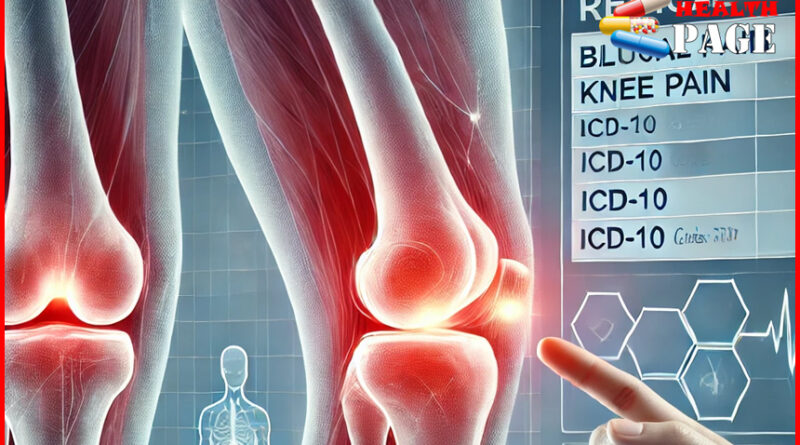Bilateral Knee Pain ICD 10: Comprehensive Guide to Diagnosis and Treatment
Bilateral knee pain is a common medical condition affecting millions worldwide. Whether caused by injury, arthritis, or an underlying medical condition, understanding its diagnosis is crucial for effective treatment. The ICD-10 code for bilateral knee pain plays a vital role in medical documentation and insurance claims, ensuring accurate diagnosis and treatment plans.
In this comprehensive guide, we will explore everything you need to know about bilateral knee pain, including its causes, symptoms, diagnosis, treatment options, and the significance of the ICD-10 coding system.
What is Bilateral Knee Pain?

Bilateral knee pain refers to discomfort or pain affecting both knees simultaneously. It can range from mild to severe, affecting mobility and quality of life.
Common Causes of Bilateral Knee Pain
There are several reasons why someone may experience pain in both knees, including:
- Osteoarthritis – A degenerative joint disease causing cartilage breakdown.
- Rheumatoid Arthritis (RA) – An autoimmune disorder that leads to inflammation.
- Injuries – Ligament tears, fractures, or dislocations.
- Tendonitis – Inflammation of tendons due to overuse.
- Bursitis – Fluid-filled sacs (bursa) inflammation.
- Gout – Uric acid buildup leading to painful joint flare-ups.
- Obesity – Excess weight putting strain on knee joints.
- Infections – Septic arthritis causing knee pain.
ICD-10 Code for Bilateral Knee Pain
The ICD-10 (International Classification of Diseases, 10th Edition) is a medical coding system used to classify and code diagnoses. For bilateral knee pain, the specific ICD-10 code is:
M25.561 – Pain in Right Knee
M25.562 – Pain in Left Knee
Since there is no single ICD-10 code specifically for bilateral knee pain, medical professionals typically use both M25.561 and M25.562 to document pain in both knees.
| ICD-10 Code | Description |
|---|---|
| M25.561 | Pain in the right knee |
| M25.562 | Pain in the left knee |
Symptoms of Bilateral Knee Pain
Common Symptoms Include:
- Stiffness and swelling
- Redness or warmth around the knee
- Limited range of motion
- Weakness or instability
- Popping or clicking sounds
When to See a Doctor?
- Persistent pain lasting more than a few weeks
- Difficulty walking or bearing weight
- Severe swelling or redness
- Fever accompanying knee pain (possible infection)
Diagnosis of Bilateral Knee Pain
Medical History and Physical Examination
Doctors assess symptoms, medical history, and previous injuries.
Imaging Tests
- X-rays – Detects bone damage or arthritis.
- MRI (Magnetic Resonance Imaging) – Provides a detailed view of soft tissues.
- CT Scan – Helps diagnose fractures or joint abnormalities.
- Ultrasound – Assesses soft tissue damage.
Laboratory Tests
- Blood tests to check for rheumatoid arthritis, gout, or infections.
- Joint fluid analysis for infections or inflammatory conditions.
Treatment Options for Bilateral Knee Pain
1. Non-Surgical Treatments
Medication
- NSAIDs (Non-Steroidal Anti-Inflammatory Drugs) – Reduce inflammation and pain.
- Corticosteroids – Used for severe inflammation.
- Pain relievers (Acetaminophen, Opioids) – Prescribed for severe cases.
Physical Therapy
- Strengthening exercises for knee support.
- Flexibility routines to improve movement.
- Low-impact activities like swimming and cycling.
Home Remedies
- Rest and Ice Therapy – Reduces swelling.
- Compression and Elevation – Improves circulation and reduces inflammation.
- Weight Management – Reduces knee stress.
2. Surgical Treatments
Knee Arthroscopy
- Minimally invasive surgery for cartilage repair.
Partial or Total Knee Replacement
- Recommended for severe arthritis or injury.
Osteotomy
- Bone realignment to reduce joint stress.

Prevention Tips for Bilateral Knee Pain
- Maintain a Healthy Weight – Reduces knee pressure.
- Stay Active – Regular low-impact exercise.
- Wear Supportive Footwear – Proper shoes prevent knee strain.
- Strengthen Muscles – Focus on quadriceps and hamstrings.
- Practice Good Posture – Proper alignment reduces joint stress.
FAQs About Bilateral Knee Pain and ICD-10 Coding
1. What is the best treatment for bilateral knee pain?
The best treatment depends on the cause but typically includes physical therapy, medication, and lifestyle changes.
2. Can bilateral knee pain be a sign of arthritis?
Yes, osteoarthritis and rheumatoid arthritis are common causes.
3. What is the ICD-10 code for chronic bilateral knee pain?
Use M25.561 (Right Knee Pain) and M25.562 (Left Knee Pain) for chronic pain.
4. How can I prevent knee pain from worsening?
Maintaining a healthy weight, staying active, and wearing proper footwear can help.
5. Is surgery necessary for knee pain?
Surgery is only recommended when conservative treatments fail.
Conclusion: Managing Bilateral Knee Pain Effectively
Understanding bilateral knee pain and its ICD-10 coding is essential for accurate diagnosis and treatment. Whether through lifestyle changes, therapy, or medical intervention, managing knee pain can improve mobility and quality of life. If you experience persistent knee pain, consult a healthcare professional for a proper assessment.
Do you suffer from knee pain? Share your experience in the comments below and let’s discuss ways to manage it effectively!


Pingback: Highnoon Aspirin: Comprehensive Guide to Uses, Benefits, Dosage